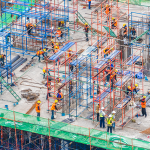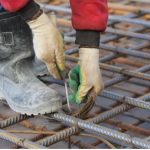Steel hollow sections have gained popularity in the construction industry. Due to their versatile and efficient nature. Steel hollow section supplier in Malaysia offers these sections in different shapes, rectangular, and circular. Also proven critical in meeting architectural and engineering needs. They not only offer needed structural strength to buildings but also allow for imaginative and creative architectural designs. The building and construction industry has become highly dynamic, with players more inclined towards sustainable and cost-effective building options. These steel hollow sections have turned out to be the solution, possessing an enviable capability to meet divergent and dynamic demands from the construction industry. This blog seeks to highlight the underlying benefits of steel hollow sections in construction projects. From their types to various shapes to their benefits and uses, it is indisputable that steel hollow sections are the present and future of construction.
Types of Steel Hollow Sections
- Square hollow sections: Because of their high strength and symmetric character, square hollow sections are popular components in building framing. It is a critical component for ensuring structural equilibrium and uniform load distribution.
- Rectangular hollow sections: When the main strength is required on one axis, such as in a floor joist, the rectangular section is chosen because of its directional strength and because this section is most suited for load-bearing operations.
- Circular hollow sections: Circular sections are the most popular solid sections used in the construction of structural columns and piers. They not only provide an outstanding surface finish, but they are also powerful structural components that are utilized in visible, certain load-bearing portions of a construction.
- Application-Based Selection: The type of hollow section—square, rectangular, or circular—is selected based on the specific structural and aesthetic needs of the construction project.
- Design and Aesthetics: Each type of hollow section not only meets structural demands but also enhances the overall design and visual appeal of buildings, influencing architectural choices.
Weight Advantages
Weight is another positive feature of steel hollow sections. Since they have a hollow body, the material is much lighter than a solid steel beam or bar of the same dimensions. As a result, constructors can execute works faster and with more comfort. Given the reduced weight of a building structure, the load on the foundation is also reduced. As a result, builders can save money spent on its construction. In addition, the lighter weight of the material makes transportation and installation simpler and more optimized. No significant physical exertion is required from workers when they carry such a beam, and ferrying with the material also affects lowering CO2 emissions into the atmosphere due to driving large trucks.
Strength and Durability
Furthermore, steel hollow sections are just as strong and durable as heavier equivalents. On the one hand, in general, they have excellent structural firmness, enabling them to support more weight than solid steel or any other material buildings. This feature makes hollow steel sections a viable alternative in a variety of structures ranging from tall buildings to bridges. In addition, the sections are more resilient to external factors such as the stump of the breeze and seismic activities compared to most building materials. Most of this structural strength results from their highly compatible geometric shape, which ensures that weight and other stresses are uniformly distributed throughout the structure. Most buildings constructed of steel hollow sections tend to be longer-lasting and more secure than buildings made with other materials.
Cost-effectiveness
Using steel hollow sections proves to be incredibly economical. The production of hollow sections is cheaper than that of solid steel sections since it uses less steel to achieve the same strength level. Such reduced weight levels also mean lower costs of transportation and help in instilling a faster construction process, which significantly reduces labor expenses. These variables combine to make steel hollow sections a cost-effective option for many projects. The cheaper material costs at the beginning, along with the savings made in maintenance costs in the long run, prove to be a budget-friendly long-term option.
Flexibility in Design
Steel hollow sections are widely celebrated for their flexibility in design. They can be fabricated into various shapes or sizes to suit diverse design requirements. Their flexibility enhances the architectural accomplishments of any structure. On multitudes of occasions, if other materials did not have the structure’s complexity, they would always need to be clad. Since architects want to achieve bold, ambitious designs, there is therefore a need to adopt steel hollow sections. The material provided by steel hollow section suppliers can be used to make structures that exhibit the best of modern architectural designs with no limitations. It can be used for both modern designs and conventional forms, for instance, sweeping curves to sharp angles stand the opportunity to create perfect structures.
Ease of Installation
Another advantage that steel hollow sections have over many other construction materials is their ease of installation. Thanks to the lighter weight, handling and transportation is easier, but so is the assembly process at the construction site. This easier, faster installation means that materials remain in storage for less time, while on-site work becomes quicker. As a result, the overall period it takes for the construction to be complete is significantly decreased. This allows workers to implement projects in a fraction of the time. As a result, this leads to huge savings for the laborers. An additional advantage is the simple connection of steel hollow sections. They are bolted or welded in place quickly and safely, meaning workers can create robust constructions.
Sustainability and Environmental Impact
In the modern construction industry, sustainability and environmental impact are top of mind. Mostly produced using recycled steel, these materials contribute less to raw material depletion. And are sustainable with a low environmental impact. Furthermore, there is also a recycling factor to consider, as steel hollow sections can be reused or recycled completely at the end of their life cycle. Thus, they follow the concept of the circular economy, which is becoming progressively more popular within the construction industry. Finally, because hollow sections are lighter in weight, they consume less energy in terms of transportation and handling, decreasing their carbon footprint even further.
Maintenance and Longevity
Steel hollow sections are also very cost-efficient to maintain and use in long-term building projects. These materials excel not only in their cost-effectiveness but also in requiring minimal maintenance, making them ideal for use in fences, roofs, frameworks, and other structures that benefit from long-lasting materials with good resistance properties. The simplicity of their requirements makes steel hollow sections an appealing option for those looking to make significant investments in building structures that are designed to last many years.
Conclusion
In conclusion, steel hollow sections can be used throughout various building applications, from doorknobs to architectural features. Thanks to their numerous advantages, they are highly popular among construction companies and architects who seek durable, efficient materials for their projects. This trend is expected to continue, indicating steady advancements in construction technology and building design. This pattern highlights the need for efficient, thoughtful, and sustainable building material choices, which the industry can utilize to meet the demanding requirements of modern construction.







